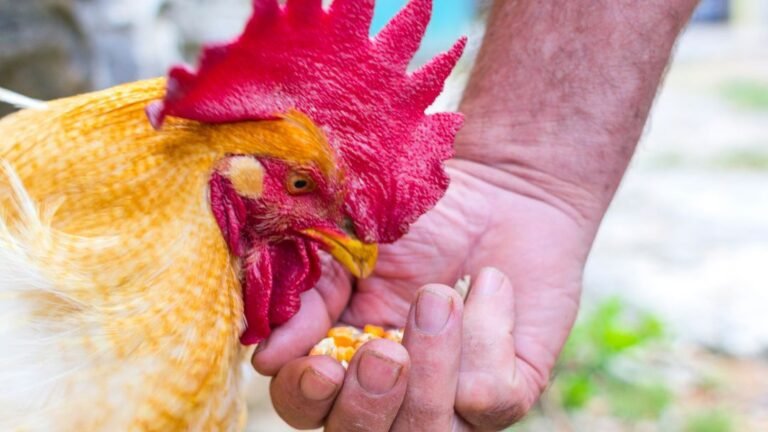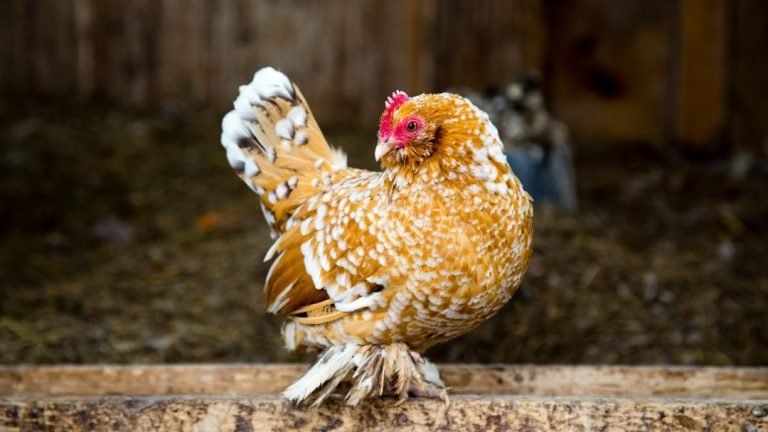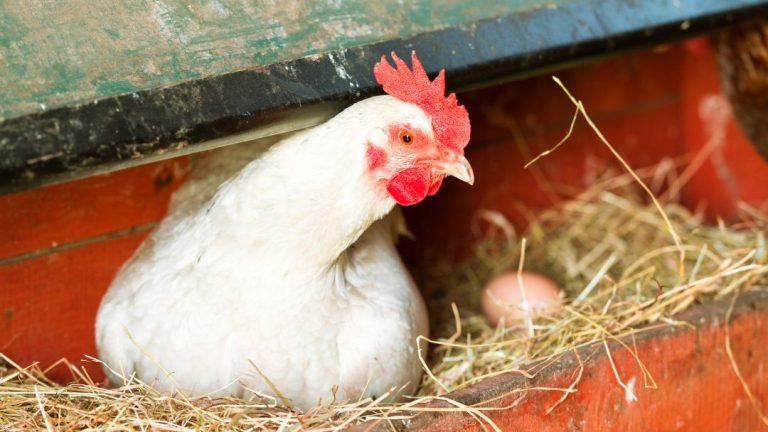Vent gleet in chickens is a condition caused by an overgrowth of yeast in their digestive system, leading to inflammation and irritation. Treatment involves maintaining good hygiene, providing a balanced diet, and administering antifungal medication if necessary.
This article will discuss the causes, symptoms, and treatment options for vent gleet in chickens to help you understand and address the issue effectively. Vent gleet, a condition caused by an overgrowth of yeast in the digestive system of chickens, can cause inflammation and irritation.
In order to address this issue, it is important to maintain good hygiene, provide a balanced diet, and administer antifungal medication if necessary. By understanding the causes, symptoms, and treatment options for vent gleet in chickens, you can take the necessary steps to ensure the well-being of your flock. This article aims to provide a comprehensive overview of vent gleet and equip you with the knowledge to effectively address this condition.
Understanding Vent Gleet
Vent Gleet, also known as cloacitis or avian candidiasis, is a common condition that affects chickens. It is caused by an overgrowth of yeast in the chicken’s cloaca, a multipurpose opening for reproduction and waste elimination. This condition can be uncomfortable and even painful for the affected chickens, leading to a decrease in egg production and overall health. In this article, we will explore what vent gleet is, how it affects chickens, and the importance of early detection and treatment.What Is Vent Gleet?
Vent gleet is a medical condition characterized by inflammation and infection of the chicken’s cloaca. The cloaca is a vital part of a chicken’s anatomy, serving as the exit point for both feces and eggs. When the yeast Candida albicans overgrows in the cloaca, it can lead to the development of vent gleet. This condition is more commonly observed in laying hens but can affect chickens of all ages, breeds, and both sexes.How Does Vent Gleet Affect Chickens?
When chickens suffer from vent gleet, they experience a range of uncomfortable symptoms. The yeast growth causes irritation, leading to redness, swelling, and soreness around the vent area. Chickens affected by vent gleet may also exhibit watery or foamy droppings with a strong, unpleasant odor. As the condition progresses, affected hens may experience a decrease in egg production, leading to economic losses for poultry keepers. Additionally, the discomfort caused by vent gleet can result in reduced appetite, weight loss, and weakened immune function, making the chickens more susceptible to other diseases.Importance Of Early Detection And Treatment
Early detection and prompt treatment of vent gleet are crucial to prevent further complications and promote the overall health of affected chickens. Neglected cases of vent gleet can result in chronic inflammation, which may lead to egg-binding, cloacal prolapse, or in severe cases, peritonitis. Therefore, it is essential for chicken keepers to be vigilant and regularly inspect their birds for any signs of vent gleet.If you notice any of the symptoms associated with vent gleet, immediate action should be taken to initiate treatment. Treating vent gleet typically involves a combination of antifungal medications, such as nystatin or fluconazole, and supportive measures to boost the chicken’s immune system and promote gastrointestinal health. It is essential to follow the recommended treatment course and monitor the chicken’s progress closely to ensure the complete eradication of the yeast infection.In conclusion, vent gleet is a common condition that affects chickens, caused by an overgrowth of yeast in the cloaca. It can lead to discomfort, decreased egg production, and weakened immune function in affected chickens. Early detection and prompt treatment are crucial to prevent further complications and promote the overall well-being of the birds. Being aware of the symptoms and taking appropriate measures will help in the successful management of vent gleet in chickens.Identifying The Causes
Identifying the Causes
When it comes to the health of your chickens, it is important to be able to identify the causes of common ailments such as vent gleet. This allows you to take the necessary steps to prevent and treat the condition effectively. In this section, we will discuss the common causes of vent gleet in chickens and how you can address them. Let’s dive right in!
Common Causes Of Vent Gleet In Chickens
1. Poor hygiene and sanitation: One of the primary causes of vent gleet in chickens is poor hygiene and sanitation practices. When coops and nesting areas are not cleaned regularly, bacteria can thrive, leading to infections that contribute to vent gleet. Keeping the coop clean and dry is crucial in preventing this condition.
2. Imbalanced diet: Another common cause of vent gleet is an imbalanced diet. Chickens require a balanced ratio of proteins, carbohydrates, vitamins, and minerals to maintain optimal health. A diet that lacks essential nutrients can weaken their immune system, making them more susceptible to infections that can cause vent gleet. Providing a well-rounded, nutritionally balanced diet is essential to prevent this condition.
3. Stress and overcrowding: Chickens that are exposed to stressful conditions are more prone to vent gleet. Factors such as overcrowding, extreme temperatures, changes in routine, and predator threats can all contribute to stress in chickens. When stressed, their immune system weakens, making them vulnerable to infections that lead to vent gleet. Ensuring adequate space, proper ventilation, and a calm environment can help minimize stress and prevent this condition.
In summary, poor hygiene and sanitation, an imbalanced diet, and stress and overcrowding are the common causes of vent gleet in chickens. By addressing these factors and taking preventive measures, you can ensure the health and well-being of your flock.
Recognizing The Symptoms
Knowing the symptoms of vent gleet in chickens is essential for every poultry keeper. By recognizing the signs early on, you can provide appropriate treatment and prevent the condition from worsening. In this section, we will discuss the visible signs of vent gleet in chickens, including foul-smelling discharge, swollen vent area, and feather loss around the vent.
Visible Signs Of Vent Gleet In Chickens
When it comes to identifying vent gleet in chickens, there are a few visible signs that you should watch out for. These signs are crucial indicators of the condition and can help you take prompt action. Here are the primary visible signs of vent gleet:
- Foul-smelling discharge
- Swollen vent area
- Feather loss around the vent
Foul-smelling discharge
A telltale sign of vent gleet in chickens is the presence of foul-smelling discharge. If you notice a strong, unpleasant odor emanating from your chicken’s vent, it is likely an indication of vent gleet. The discharge may be sticky or creamy in texture, often yellow or grayish in color.
Swollen vent area
Another visible sign of vent gleet is a swollen vent area. The vent, which is the external part of the chicken’s reproductive and digestive systems, may become red, inflamed, and swollen. This swelling is often accompanied by discomfort and pain for the affected chicken.
Feather loss around the vent
In addition to the foul-smelling discharge and swollen vent area, feather loss around the vent is a common symptom of vent gleet. Chickens with vent gleet often exhibit patchy feather loss in the area surrounding the vent. This feather loss is a result of the constant irritation and inflammation caused by the condition.
If you observe any of these visible signs in your chickens, it is crucial to take immediate action. Vent gleet, if left untreated, can lead to further complications and discomfort for your feathered friends. In the next section, we will delve into the causes and treatment options for this condition.
Effective Treatment Options
Treating Vent Gleet in chickens is essential to alleviate discomfort and prevent further complications. While consulting a veterinarian is recommended for a proper diagnosis, there are several effective treatment options available. These options include natural remedies, medications, and preventative measures to reduce the likelihood of recurrence.
Natural Remedies For Vent Gleet In Chickens
When it comes to natural remedies, certain products can help restore the balance in the digestive system, promoting overall health. These remedies are usually safe and gentle, making them a popular choice among chicken owners.
Probiotics And Digestive Enzymes
Probiotics and digestive enzymes are known to support the growth of beneficial bacteria in the intestines, reducing the overgrowth of harmful pathogens. Adding a probiotic supplement to the chickens’ diet can help restore intestinal balance and improve overall gut health.
Apple Cider Vinegar Wash
Apple cider vinegar has antimicrobial properties and can be used as a wash for the affected area. Diluting one part apple cider vinegar with ten parts water, gently cleanse the vent area to help eliminate fungal and bacterial growth.
Herbal Supplements
Herbal supplements, such as oregano oil or garlic extract, are believed to have antifungal and antibacterial properties. These supplements can be added to the chickens’ feed or water to support their immune system and aid in fighting Vent Gleet.
Medications For Vent Gleet In Chickens
In more severe cases, medications may be necessary to treat Vent Gleet. These medications typically require a prescription from a veterinarian and should be used under their guidance.
Antifungal Medications
Antifungal medications, such as nystatin or ketoconazole, can be prescribed to eliminate the fungal overgrowth causing Vent Gleet. These medications target and destroy the fungi, effectively resolving the issue.
Antibiotics For Secondary Infections
In cases where Vent Gleet has led to secondary bacterial infections, antibiotics may be necessary. The antibiotics prescribed will depend on the specific bacteria present, and a veterinarian’s guidance is crucial to ensure the right medication is used.
Tips For Preventing Vent Gleet Recurrence
Preventing Vent Gleet recurrence is achievable with the implementation of proper hygiene and sanitation practices, a balanced diet, and stress reduction techniques.
Proper Hygiene And Sanitation Practices
Regularly cleaning the coop, ensuring the bedding is free from moisture and fecal matter, and providing clean and dry nesting areas are essential to prevent the conditions that lead to Vent Gleet.
Balanced Diet And Nutritional Supplements
Feeding chickens a balanced diet rich in nutrients will strengthen their immune system and promote digestive health. Including nutritional supplements like probiotics or vitamins can further support their overall well-being.
Stress Reduction Techniques
Reducing stress in chickens helps support their immune system and helps prevent Vent Gleet. Providing adequate space, minimizing disturbances, and ensuring a calm and comfortable environment are key to reducing stress levels.
Conclusion
Vent gleet in chickens is a common and distressing ailment that can cause discomfort and health issues for your flock. Understanding the causes, such as improper diet and stress, is crucial for effective treatment. By implementing proper hygiene practices, maintaining a balanced diet, and providing stress-free conditions, you can prevent and manage vent gleet effectively.
Remember, keeping a close eye on your chickens’ health and promptly addressing any signs of vent gleet is paramount for their overall well-being.



